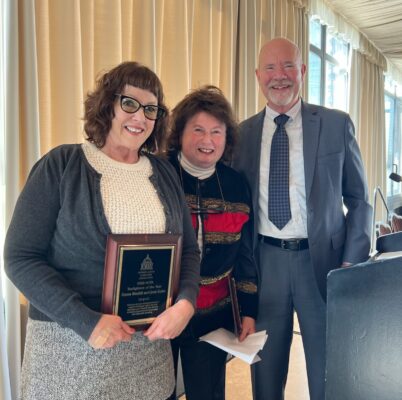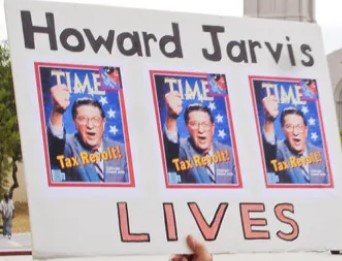By Jon Coupal – November 11, 2024
Many election contests in California are not final as ballots are still being counted, but it appears that Proposition 5, which would have made it easier to raise property taxes, is going down in flames. This is great news for California homeowners.
Here are some observations about this welcome taxpayer victory. First, the opposition campaign, led by the Howard Jarvis Taxpayers Association initiative committee Protect Proposition 13, No on 5, was well organized. Our effort to educate voters as to the threats posed by Prop. 5 was successful. All of our campaign’s voter contact information reminded voters that Prop. 5 would lower the two-thirds vote threshold for local bonds to 55%. The two-thirds vote requirement for local general obligation bonds was adopted in 1879 as a protection against excessive debt at the local level repaid by property owners. Perhaps more important, our campaign stressed that Prop. 5 would bypass the limits of Proposition 13. Even the most ardent tax-hike enthusiast knows, and fears, that Prop. 13 remains extremely popular.
One hurdle we faced was a misleading ballot label, which is the brief summary of the measure that voters see on their ballot when they vote. The label did not mention the current two-thirds vote requirement for passing bonds, leaving the impression that the proposed 55% threshold might represent a tougher standard than the one that currently exists.
HJTA sued over this omission and won, initially. The trial judge strongly agreed with us that voters were entitled to know that Prop. 5 would bring the vote threshold down from two-thirds, and that the failure to disclose this important information was misleading. But then Attorney General Rob Bonta, who had written the ballot label, appealed the decision. The appeals court sided with Bonta on the grounds that the courts should show deference to the attorney general on ballot materials.
So, it became even more important for HJTA to educate voters that the longstanding requirement for a two-thirds vote of the electorate was under threat. This was especially challenging given the vast amount of money that proponents of Proposition 5 raised in pursuit of their goal to make it easier to raise taxes.
Their haul was nearly $15 million, including $4.7 million from a PAC connected to the nonprofit foundation funded by Facebook/Meta CEO Mark Zuckerberg and his wife, Priscilla Chan. Why billionaires would spend their money trying to raise property taxes on ordinary homeowners is a question worth asking.
Our campaign was outspent but not overpowered. The Howard Jarvis Taxpayers Association has hundreds of thousands of members, and its campaigns, like the organization itself, are supported with their individual donations. HJTA relied on radio and billboard advertising and supplied a vast grassroots army with signs, flyers and doorhangers to help get out the word out that Proposition 5 would unleash a stream of property tax increases exempt from Proposition 13’s limits.
One of our most effective partners in this fight was the group “$20 Billion Reasons,” which had been formed to fight Regional Measure 4, a $20 billion bond proposal by nine Bay Area counties. Their opposition was so intense, it forced the regional authority proposing the bond to drop the effort. That allowed $20 Billion Reasons to immediately pivot to join our work opposing Prop. 5. Thanks in part to their help, Prop. 5 appears to have failed in seven of the nine Bay Area counties.
Other notable allies in this fight were virtually every local and statewide taxpayer organization in California, property rights organizations, small and large business associations, and the list goes on.
This election victory proves that the modern tax revolt movement launched by Howard Jarvis in 1978 is not dead and that an effective political campaign can defeat the tax-and-spend interests. As Benjamin Franklin reminded us, we must all hang together or assuredly we will all hang separately.
Jon Coupal is president of the Howard Jarvis Taxpayers Association.



